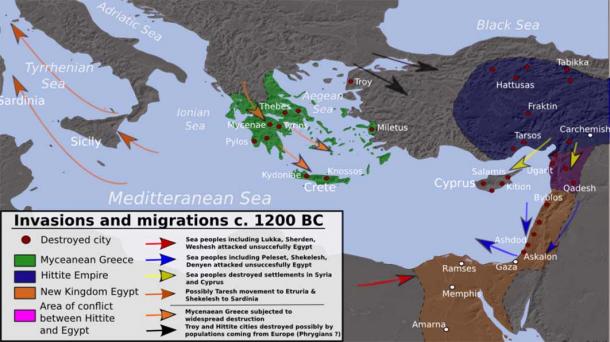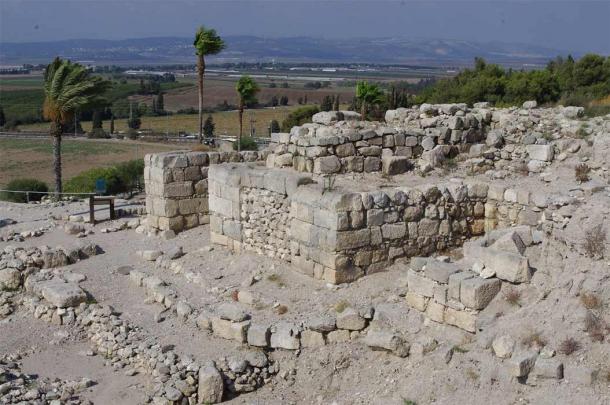The Late Bronze Age collapse of the 12th century BC is one of the greatest and most enduring puzzles of Mediterranean archaeology. A cosmopolitan age, perhaps one of the first true episodes of globalization in human history, which saw the rise of the first historical empires of Egypt and Babylon, as well as the apogee of the Hittite, Minoan and Mycenean civilizations, came within a few years to a sudden and fiery end. At the same time, a mysterious coalition of peoples, known from contemporary Egyptian inscriptions as the Sea Peoples , appeared on the coasts of Europe, Egypt and the Levant, wreaking havoc on every city or village that they found along their path. Many believe this was the origin of Plato’s story of Atlantis, as retold to Solon by the learned priests of Sais: That of a mighty power that came forth out of the Atlantic Ocean to subdue all of Europe and Africa, as far as Egypt.

Invasions, population movements and destruction during the collapse of the Bronze Age, c. 1200 BC derived from Atlas of World History (2002) ( Alexikoua / CC BY-SA 3.0 )
Generations of historians have since established a direct connection between the Sea Peoples invasions and the Late Bronze Age collapse. In history, as in many other disciplines, however, correlation does not always mean causation. What then was the role of the mysterious Sea Peoples in the Bronze Age collapse? And from whence did they come to the coasts of Italy, Greece, Egypt, Syria, Lebanon and Turkey?

A gateway into the fortified Philistine citadel of Megiddo, in present-day Israel. (Image: © Marco M. Vigato)
An Age of Cataclysms
The Eastern Mediterranean world of the late second millennium BC was one of exceptional artistic and cultural flourishing, with trade routes stretching far into Europe, Asia and Africa. This produced a cosmopolitan and highly globalized society that would not again be seen until at least the late Hellenistic and Roman period, a thousand years later. It was the time of the Egyptian New Kingdom period, with pharaohs like Amenhotep III, Akhenaton, Tutankhamun and Ramses II, who traded correspondence and held diplomatic relations with Cyprus, Mycenean Greece and the mighty Hittite Empire to the North, in what is today Turkey, Syria and Lebanon. For centuries these great historical civilizations maintained a balance of power that, although not always peaceful, nevertheless favored cultural exchange and international trade on a scale never before seen in human history.
Like this Preview and want to read on? You can! JOIN US THERE ( with easy, instant access ) and see what you’re missing!! All Premium articles are available in full, with immediate access.
For the price of a cup of coffee, you get this and all the other great benefits at Ancient Origins Premium. And – each time you support AO Premium, you support independent thought and writing.
Marco M. Vigato is an independent researcher into ancient mysteries and megalithic civilizations. A native of Italy, he lives in Mexico City and has travelled extensively across Europe, the Middle East, North Africa, South-East Asia, North and South America. He holds an MBA from Harvard University and a B.A. and M.Sc. from Bocconi University. Marco’s next book, The Empires of Atlantis , will be published by Inner Traditions/ Bear&Co in January 2022.
Top Image : Léon Bakst’s vision of cosmic catastrophe. Stat Russian Museum ( Public Domain )
Related posts:
Views: 0
 RSS Feed
RSS Feed

















 May 13th, 2021
May 13th, 2021  Awake Goy
Awake Goy  Posted in
Posted in  Tags:
Tags: 
















